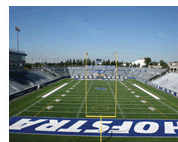Powerlifting Despite Injuries
Matt Sohmer was a successful Long Island high school football player from Farmingdale. Until he tore his meniscus and then his ACL. Then, in college, a late hit ended any future football plans. Prior to these injuries, and during his rehabs, powerlifting had become a significant tool in Matt’s training. After football moved to the rearview mirror, lifting became his focus.
Concentrating on powerlifting full time improved his strength and he decided to compete in the United States of America Powerlifting RAW* Nationals for 2015 and 2016. Another leg injury forced him to skip the 2017 tournament and almost ended his career in that sport, too.
Matt traveled a long road to recovery. Doctors proclaimed that lifting, or any physical activity, was not in his future. Those diagnoses didn’t stop Matt when he endured the football injuries and he was determined that the medical advice would not stop him now. Research to strengthen his leg and minimize the effect of the injury were part of the rehab process.
Matt made a comeback. He competed in his third RAW nationals but was not a favorite to win the tournament. He thrived as an underdog and in the spotlight. Matt always has had the drive to do better than others expect of him. He used his injuries, rehabs, advice from doctors and the comments from others as motivation.
Happy ending! Matt became the national champion in the 264-weight class. He set personal highs in all three lifts – an 843-pound square, 355—pound bench and 810-pound deadlift. That’s a total of 2,008 pounds! This was the first time he passed the 2,000-pound mark and he was only seven pounds from the class world record for squats and 12 pounds from the deadlifts record.
With determination, Matt overcame setbacks with injuries, work and life. He went from a no-name to, as he stated at the time, “smoking everybody.”
Matt holds more than 40 U.S and world records and he is the youngest competitor to squat 800-plus pounds RAW without kneewraps. A little determination and motivation can go a long way on the road to success.
*“Raw” powerlifting is lifting with little to no additional equipment. In practice, “Raw” powerlifting means, in competition, athletes are only allowed to use approved lifting belts, singlet, wrist wraps and knee sleeves along with chalk.









